Welcome to Gdansk! This Polish coastal city is where Gothic steeples meet a breezy maritime vibe. And where centuries of Hanseatic history mingle with modern energy. If you’ve been scouring a travel guide for the most intriguing things to do in Northern Poland, Gdansk stands ready to deliver. This city’s cobblestone lanes, waterfront promenades, and vibrant cultural pulse make it a must-visit for anyone curious about the Baltic region.
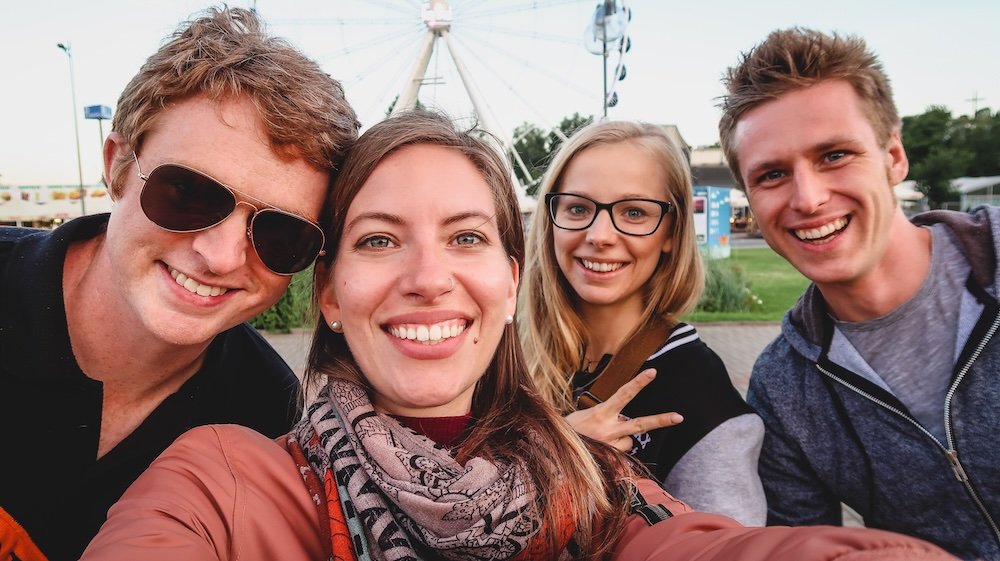
You’re here because you want a dynamic city break blending heritage and contemporary flair. You might be ticking off major Polish destinations and discovered Gdansk’s Old Town or you’ve heard about its maritime legacy and legendary amber trade. Perhaps you crave specifics: top attractions, local eats, quick day trips. This guide condenses it all, so you can zoom straight into each experience without rummaging for scattered info.
Our Gdansk Travel Guide from Samuel and Audrey YouTube Channel with hosts Nomadic Samuel + That Backpacker
You may worry about Gdansk’s language barriers, finding the best vantage for that iconic crane photo, or deciding if the city can fill more than a single day. Confusion about transport within the Tri-City area, or how crowded places get in peak summer, might also be on your mind. Relax. We’ll tackle these concerns, giving you practical tips.
![]()
Gdansk Attractions
Visitors to Gdansk have strolled the Long Lane, admired the vibrant facades, tasted herring by the Motlawa River, and chatted with locals about hidden corners worth exploring. Whether you’re a history aficionado eager for medieval architecture, a foodie seeking fresh Baltic fish, or a family wanting interactive museums and beach days, Gdansk fits the bill. Backpackers might love the lively hostels and bar scene. Couples can discover romantic sunsets along the river or side by side on ferries bound for Hel Peninsula.
Gdansk merges a proud shipping past with a modern cultural heartbeat. Ahead, we’ll outline the Top 10 Things To Do, from enthralling churches to scenic river walks, ensuring your itinerary is both captivating and flexible. Then, we’ll delve into local cuisine, recommended tours, lodging suggestions, day-trip expansions, transport tips, and final reflections. Ready to wander the cobbles and breathe in maritime breezes? Let’s dive in.

Top 10 Things To Do in Gdansk, Poland For Visitors
Gdansk might be famed for amber and shipyards, but its cultural extends far beyond these icons. Below are ten recommended activities. Dive into these highlights to shape your best Gdansk adventure.
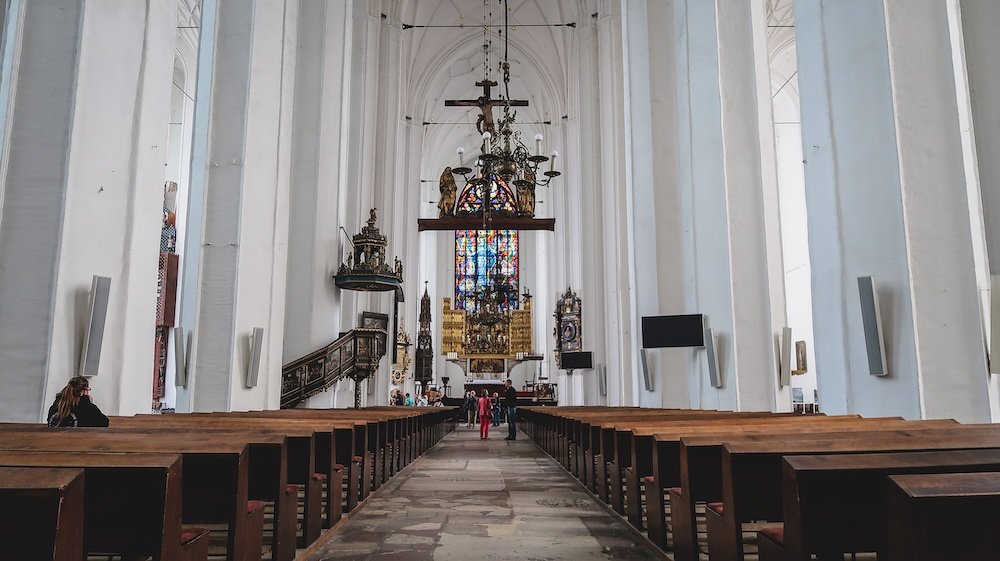
1) St. Mary’s Church, Gdańsk Basilica (Bazylika Mariacka – St. Marienkirche)
Standing in St. Mary’s Church, you immediately feel dwarfed by Gothic pillars stretching upward. It’s touted as one of the largest brick churches in the world—a monument to the city’s medieval ambition. Inside, the vast nave hums with a sense of stillness, punctuated by occasional footsteps or hushed camera clicks. Exploring side chapels reveals ornate altars, centuries-old frescoes, and a famed astronomical clock that once wowed townspeople. Climb the tower if your legs can handle the winding steps; you’ll be rewarded with city panoramas. In winter, sunlight filtering through stained-glass windows casts enchanting colored patterns on the worn floor.
- Entrance: Generally free, though tower climbs might require a small fee.
- Architecture: Predominantly Gothic, using countless bricks; keep your eyes peeled for small artistic details in pillars.
- Atmosphere: Can get busy in peak season, but morning visits often yield quieter corridors.
Tip: Bring cash if you plan the tower climb—card readers can be finicky, and the vantage is worth it.
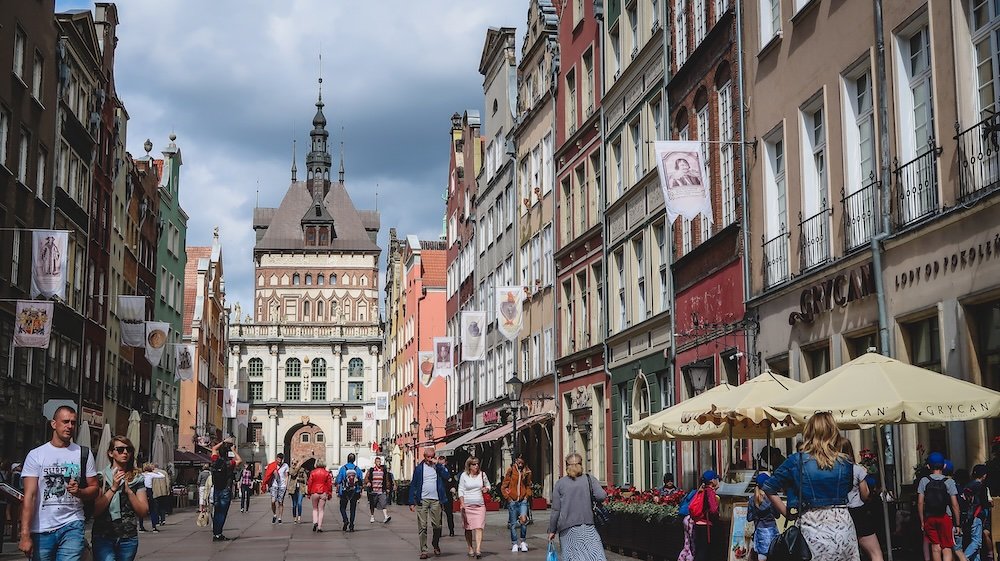
2) Stroll Along Long Lane (Ulica Długa – Langgasse)
Long Lane forms Gdansk’s showpiece: a radiant corridor flanked by colorfully adorned facades and lively street performers. It leads into Długi Targ (Long Market), culminating in the iconic Neptune Fountain at its heart. Whether you fancy sipping a latte beneath historic buildings or snapping photos of the ornate Golden House, you’ll find fresh angles each step. By day, the thoroughfare bustles with shoppers, tourists, and local artists selling paintings or amber trinkets. By night, lights twinkle overhead, giving the cobblestones a soft glow. The synergy of heritage architecture and modern flair cements Long Lane as a top draw for every Gdansk visitor.
- Shops & Cafés: Souvenir stores selling amber and crafts, plus an array of bistros or gelato spots.
- Key Landmarks: The Golden Gate at one end and the Green Gate near the river.
- Crowds: Peak afternoons see throngs; early mornings or late evenings feel more relaxed.
Tip: Pause at Neptune’s Fountain—the symbolic guardian of the city’s maritime soul, perfect for a quick selfie or meeting spot.
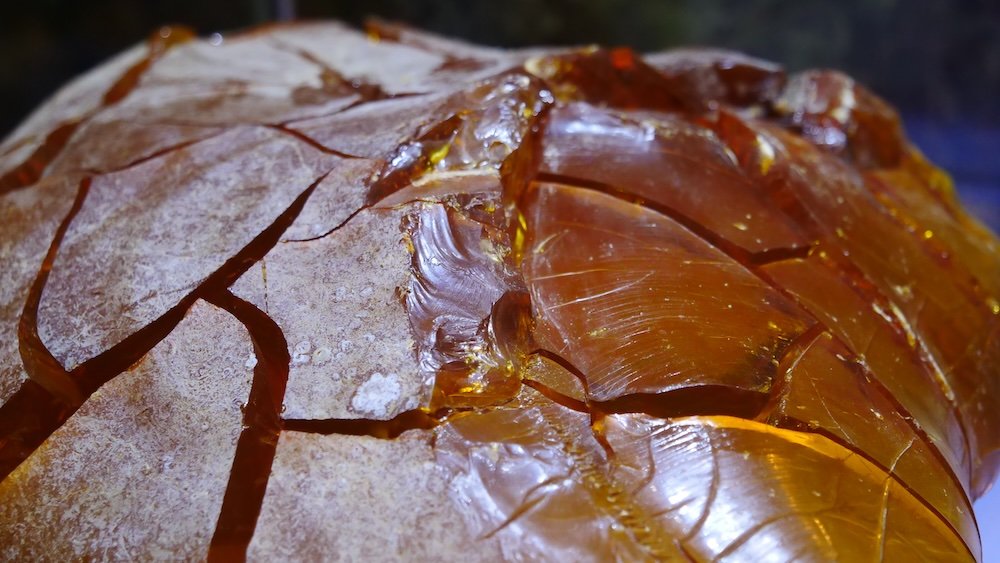
3) Amber Museum (Muzeum Bursztynu)
The Amber Museum showcases Gdansk’s centuries-long romance with fossilized tree resin. Step inside, and you’ll discover precious lumps of amber with prehistoric insects locked within, along with intricate jewelry designs. Exhibits also detail how amber shaped local trade routes, forging Gdansk’s economic backbone in medieval times. Interactive sections let you handle small amber pieces, learning to spot real from fake. The building itself—sometimes a revamped historic venue—adds an extra layer of charm. Emerging from the museum, you’ll see Gdansk’s amber stalls in a new light: not just souvenirs, but pieces of Earth’s ancient story.
- Duration: Allocate about an hour, or more if you enjoy reading each exhibit thoroughly.
- Gift Shop: Sells genuine pieces but compare prices with other city vendors.
- Tip: If you’re an amber enthusiast, ask staff about local amber fairs or workshops.
Tip: Test real amber by rubbing it to see if it emits a mild pine scent—museum guides might demonstrate.
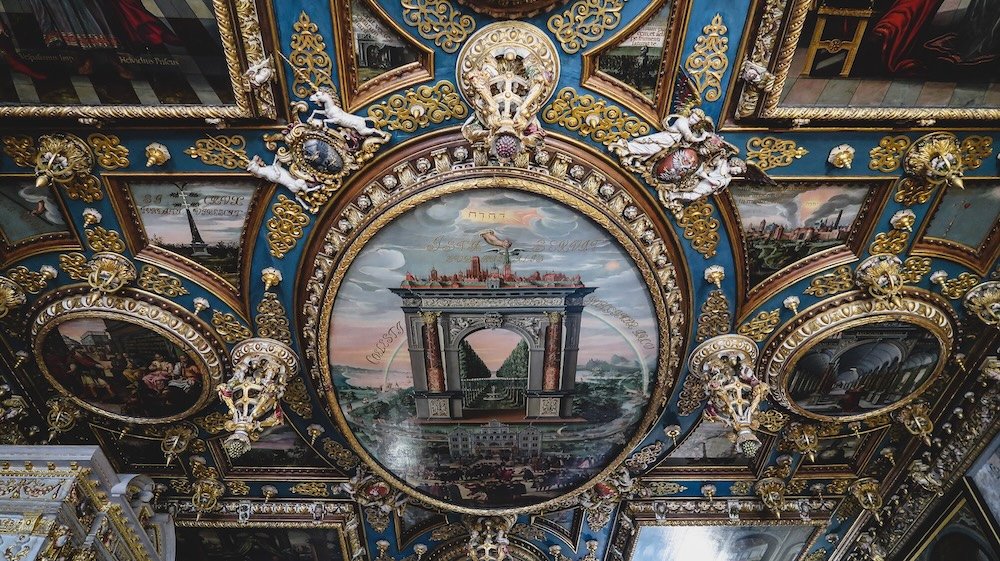
4) Historical Museum of the City of Gdansk (Muzeum Historyczne Gdańska)
Nestled in the Main Town Hall, the Historical Museum delves into Gdansk’s rise as a Hanseatic powerhouse, weaving stories of merchant guilds, craftspeople, and maritime might. Each floor highlights different periods: from medieval expansions through centuries of trade alliances and conflicts. You’ll find elaborate rooms with painted ceilings, detailing the lavishness of city governance in the golden age. Wander corridors that survived wars and rebuilds, pondering how Gdansk overcame historical upheavals. A climb up the Town Hall tower yields sweeping Old Town vistas, bridging the past with modern sprawl. It’s an essential stop if you yearn to connect the dots behind Gdansk’s current cosmopolitan flair.
- Language: English panels or audio guides often provided, assisting non-Polish speakers.
- Time: About 1–2 hours, but linger if you love gleaning old city maps or artifacts.
- Tip: Some days offer free entry—check the official site for updates.
Tip: Save the tower climb for midday, letting morning clouds pass so you’ll enjoy clearer city panoramas.
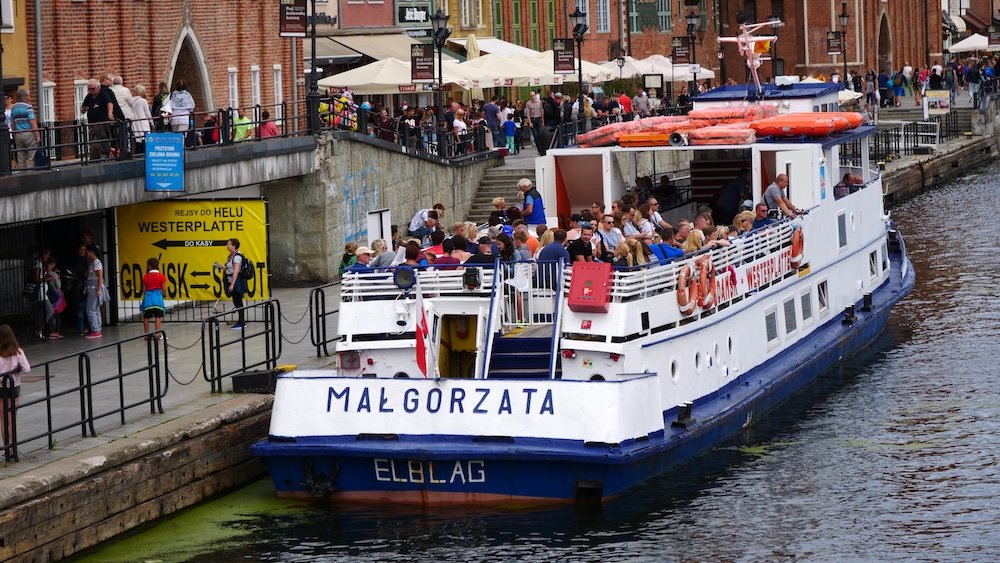
5) Motlawa River (Mottlau)
The Motlawa River threads through Gdansk, reflecting pastel-hued buildings and the famed port crane. Strolling its banks is a treat—admire docked boats, pop-up stands hawking local crafts, and countless café terraces. Street musicians sometimes serenade passersby, adding melodic undertones to the gentle slosh of water. If it’s warm, short boat tours reveal Gdansk’s waterfront from a new vantage, gliding under bridges or near industrial shipyards. Evening brings a romantic sheen: lights shimmer on the water, while couples share a quiet moment gazing across the banks. The Motlawa experience merges city bustle with the serenity of a maritime setting.
- Short Cruises: 30–60 minute loops, some focusing on historical commentary or harbor highlights.
- Photo Ops: The old Crane in the background, especially near sunset, yields postcard-worthy shots.
- Tip: Some cruises serve small snacks or drinks, making for a leisurely afloat break.
Tip: Walk both sides—footbridges connect different riverbanks, each offering a fresh perspective of city silhouettes.
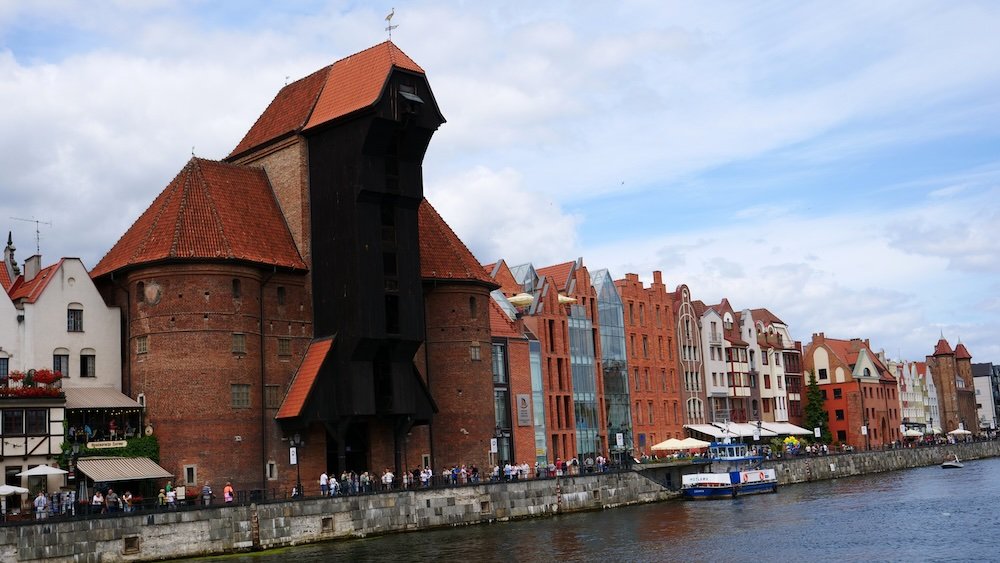
6) Medieval Port Crane (Żuraw)
Among Gdansk’s most iconic symbols, the Medieval Port Crane (Żuraw) once hoisted cargo from ships in the 14th century prime. Today, it’s a living museum, revealing how massive wooden wheels (powered by men walking inside them) lifted heavy goods. Stepping in, you’ll see gearworks that highlight the city’s maritime prowess and trade dominance. Exhibits also detail daily dock life—merchants, sailors, and the interplay of far-flung trade routes. Outside, the crane’s silhouette stands tall on the Motlawa, bridging Gdansk’s present with its bustling port past. It’s a distinctive gem that underscores the city’s synergy with the sea.
- Admission: Combined ticket deals might include the Maritime Museum or other sites.
- In/Out: Some areas have tight walkways and wooden steps—mind your head if you’re tall.
- Tip: Early visits avoid midday lines; aim for morning if you dislike crowds.
Tip: Peer behind the crane—the lesser-seen backside sometimes hosts small exhibits or vantage angles rarely photographed.
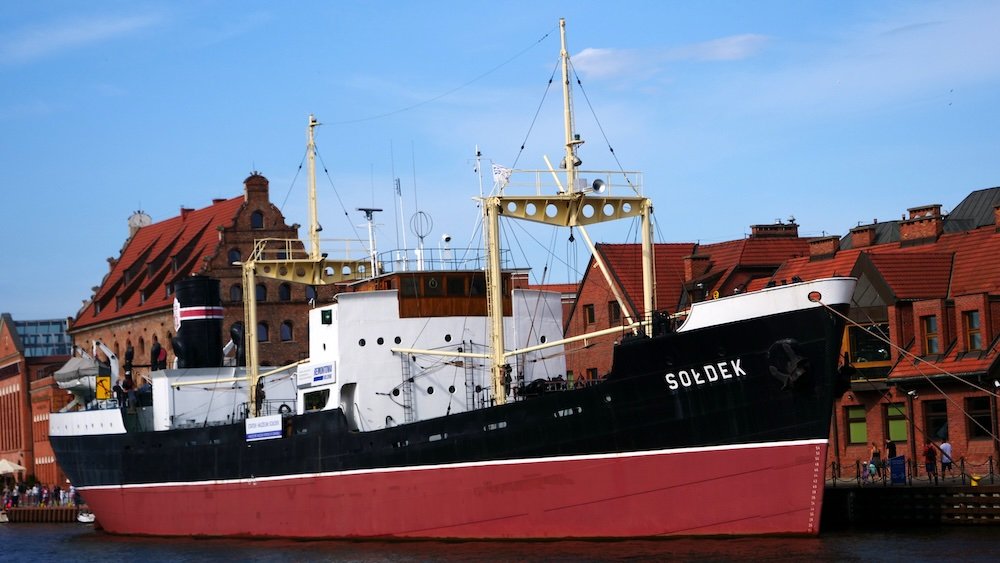
7) SS Sołdek (Stanislaw Sołdek)
Moored close to the crane, SS Sołdek is a historic coal and ore freighter turned floating museum. Launched after WWII, it symbolizes Poland’s shipbuilding resurgence. Clamber aboard to peek at cramped crew quarters, engine rooms, and the deck offering harbor panoramas. Interactive panels clarify Sołdek’s role in commercial routes plus broader maritime transformations. For ship-lovers or just curious travelers, this glimpse into gritty maritime labor is both educational and fun. On breezy days, the top deck is perfect for river views and reflection on Gdansk’s post-war evolution.
- Location: Typically anchored near the Polish Maritime Museum section—follow signposts.
- Exhibits: Include model displays, archival photos, and sometimes audio narratives.
- Tip: Watch for steep ladders between decks—comfortable footwear helps you climb safely.
Tip: Grab a combo ticket for Sołdek plus the Maritime Museum—bundled pricing typically saves money.
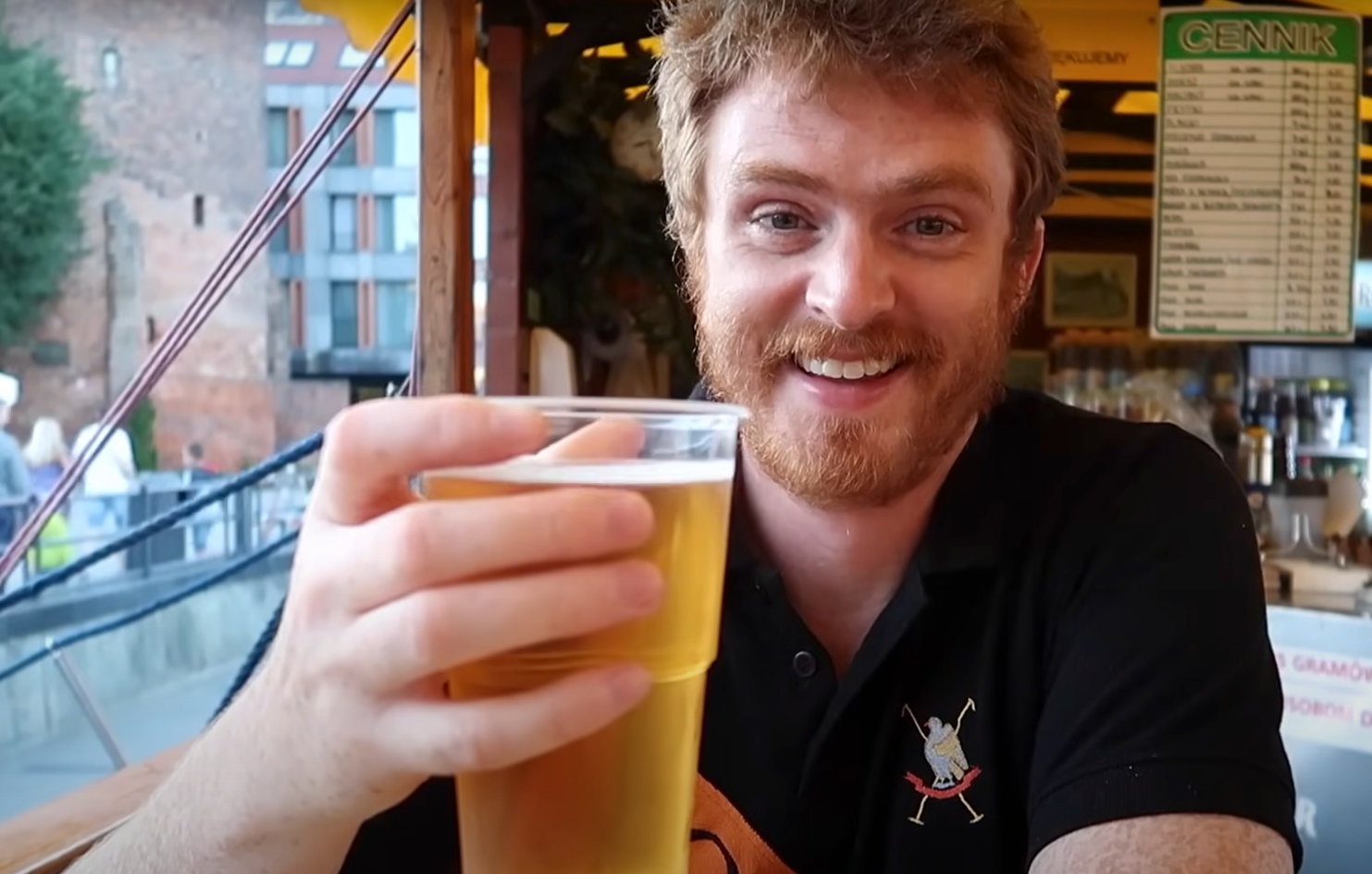
8) Float Over to Oscars for Fish and Chips
A novel twist: Oscars is a floating fish and chips restaurant moored on the Motlawa River. You board a short gangway, find a seat, and let gentle waves rock your meal. The fish—freshly sourced from local suppliers—pairs with golden chips and tangy sauces. Crisp Baltic breezes swirl around you as you sip a cold beer or maybe a fruit-laced compote. The vibe is casual, but the watery setting intensifies the flavors—like a micro sea voyage with every bite. For an easy lunch or dinner break, Oscars fuses Gdansk’s maritime soul with classic comfort food.
- Menu: Fish & chips are the star; some variations (like cod, haddock) might rotate.
- Ambiance: Expect a floating deck feel—noisy at times if many diners move about.
- Tip: If you’re prone to motion sickness, pick a stable seat away from the edges.
Tip: Arrive outside peak mealtimes—limited seating can fill fast, especially in summer.
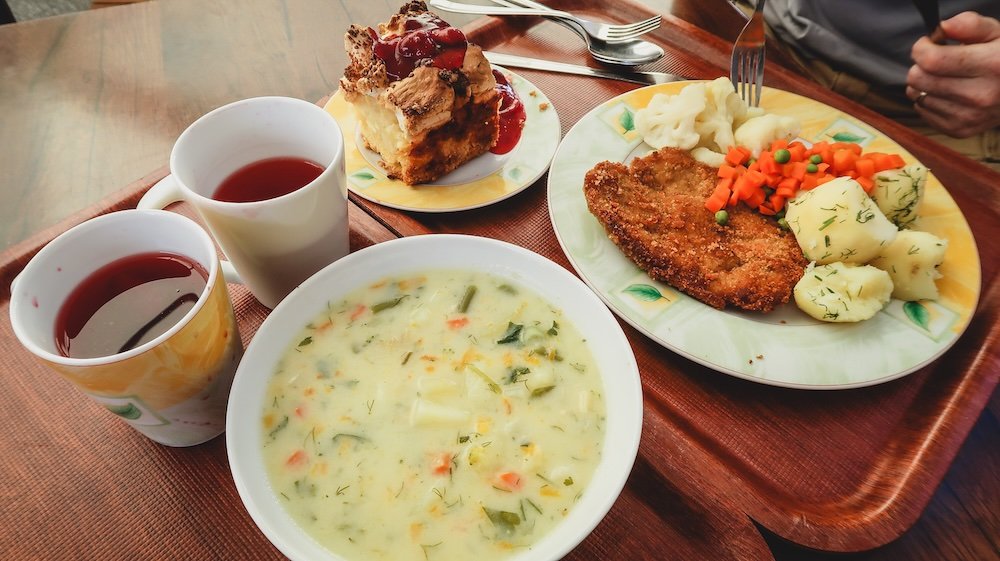
9) Neptune Milk Bar (Bar Mleczny Neptun)
To taste genuine Polish everyday fare, pop into Neptune Milk Bar (Bar Mleczny Neptun). These milk bars hail from Communist-era Poland, offering straightforward, homemade dishes at budget-friendly prices. Expect pierogi, schnitzels, and steamy soups served on cafeteria trays. The vibe is typically functional—no frills, just comforting plates. Locals, students, and savvy tourists all gather here, bridging language gaps for good grub. It’s a taste of authenticity beyond the tourist trail, letting you sample hearty Polish cooking among the city’s real heartbeat.
- Ordering: Might be in Polish; look for boards listing dishes or politely ask staff for help.
- Payment: Usually at the counter first, then present your receipt to the serving window.
- Tip: Great for cheap lunches—entire meals can cost a fraction of what tourist restaurants charge.
Tip: Try a sweet pierogi (like berry or sweet cheese) for dessert—it’s a uniquely Polish indulgence.
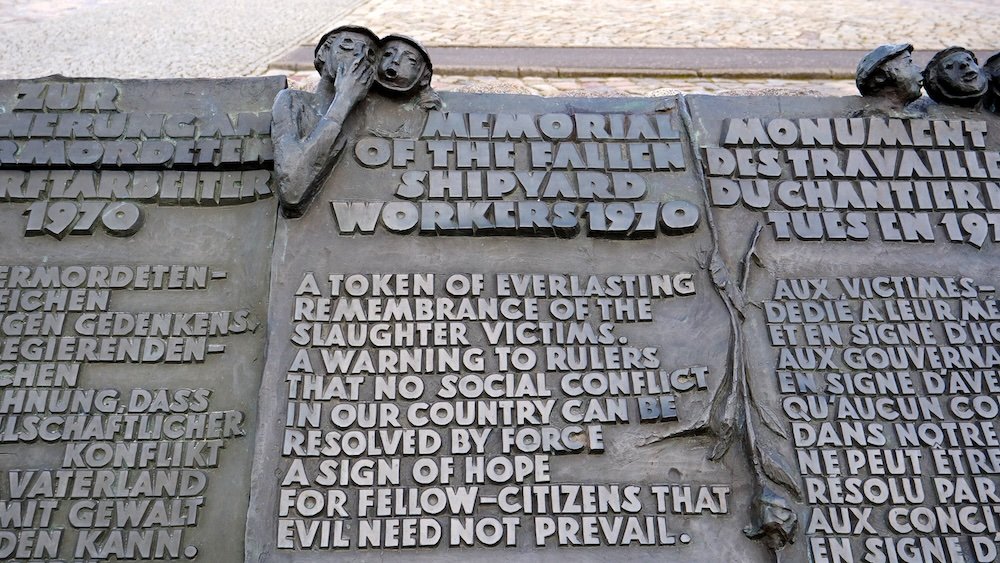
10) European Solidarity Centre (Europejskie Centrum Solidarności)
Gdansk shaped modern history through the Solidarity movement, and this center captures the spirit of that revolution. Inside, exhibits chronicle how shipyard workers’ strikes ignited a wave of change culminating in the fall of communism across Eastern Europe. Multimedia displays, personal testimonies, and iconic artifacts—like Lech Wałęsa’s typesetting table—paint a vivid story of peaceful resistance. The building’s architecture echoes a rusted ship hull, symbolizing Poland’s industrial roots. After exploring, the rooftop terrace rewards you with city views and a reflective moment. It’s a stirring reminder that beyond its medieval facade, Gdansk’s recent past resonates globally.
- Location: Near the Gdańsk Shipyard, walkable from the Old Town or accessible by tram.
- Duration: 2–3 hours if you absorb all interactive elements.
- Tip: Some visitors end up deeply moved—it’s not just a museum, but a testament to human resilience.
Tip: Don’t rush—the final walls of personal messages and hope often strike an emotional chord worth reflecting on.

What To Eat and Drink in Gdansk, Poland
Between Old Town adventures and harbor strolls, Gdansk meals can supercharge your exploration. The city’s culinary scene merges Polish traditions, coastal influences, and a dash of modern flair. Check out these things to do for your taste buds:
Traditional Polish Favorites
You’ll see staples like pierogi—dumplings stuffed with potato-cheese, meat, or mushrooms—often topped with fried onions. Bigos (hunter’s stew) teems with sauerkraut, meats, and a tangy stew base. For a heartier spin, try golonka (pork knuckle) slathered in mustard, typically accompanied by potatoes or bread. Such dishes root you in centuries-old dining customs, comforting and filling. Many Old Town restaurants present these classics with slight maritime twists, like extra fish-based apps or side salads referencing Baltic produce. If you’re new to Polish cuisine, you’ll quickly discover how it warms you from within.
Tip: Split an order of pierogi among friends if you want room to sample more dishes on the menu.
Seafood & Baltic Inspiration
Given Gdansk’s harbor legacy, seafood stands prominently. Restaurants might serve herring in cream sauce or pickled variants, a local go-to. Cod or salmon appear grilled or fried, sometimes served with a side of potatoes and fresh dill. Searching for something unique? Smoked eel or local fish soups might grace certain menus, especially near the Motlawa River. If you spot an “amber fish” reference, it’s typically a nod to local flair, tying the region’s amber identity into gastronomic creativity.
Tip: Ask for daily fish specials—chefs often adapt to that morning’s catch, guaranteeing freshness.
Café Culture & Sweet Treats
Gdansk fosters a café scene mixing old-school pastries with artisanal coffees. Sip a latte at an amber-themed café or savor herbal teas on a sidewalk terrace near Długi Targ. Bakeries brim with pączki (Polish doughnuts), drożdżówki (yeast pastries), or layered sernik (cheesecake). If your sweet tooth roars at midday, a slice of apple pie (szarlotka) with whipped cream does wonders. Street carts sometimes vend sweet waffles topped with jam, chocolate sauce, or whipped cream—good for a quick sugar boost between museum stops. The aroma of freshly brewed coffee interwoven with pastry scents can be utterly irresistible.
Tip: Look for old-church-turned-cafés—some hidden corners have repurposed historical buildings, making your coffee break extra atmospheric.
Beer, Vodka & Craft Beverages
Poland’s beer culture thrives in Gdansk, with local brands (like Żywiec or Tyskie) plus smaller craft brews. Bars near the river or around the main square might offer tasting flights featuring hoppy IPAs or smoky porters. If you fancy something stronger, vodka is a Polish hallmark. From bison grass (Żubrówka) to fruit-flavored variants, you can sample shots that highlight the country’s distilling prowess. Alternatively, mead (miód pitny)—a honey-based alcoholic beverage—ties you to medieval sipping traditions. Pair it with a meaty dish or sip it alone for a sweet, warming finish.
Tip: Go slow on vodka—Polish traditions might see rounds poured liberally, but it’s potent stuff.
Milk Bars & Budget Bites
If you’re tight on money or just want a genuine local experience, milk bars (bar mleczny) remain a go-to. These cafeterias date back to Communist times, serving up comfort staples—like soups, pierogi, or cutlets—at wallet-friendly prices. Expect basic décor but hearty, fresh, often made-from-scratch meals. The vibe is functional, with minimal fuss, but the flavors impress. If you see a line of locals, that’s your sign it’s worth the short wait.
Tip: Check overhead menus—some only in Polish, so learn a few dish names or point confidently to attempt ordering.
Seasonal Treats
Summer might introduce fresh berries in desserts or cold fruit soups, while winter leans into warming stews and hot drinks. Gdansk’s Christmas market, if you’re around in December, features spiced grzaniec (mulled wine) and festive pastries, letting you nibble while soaking up holiday lights. Seasonal fish can also shift, so that favorite cod dish might morph into a different catch come autumn. Embrace the rotating menu, as it ties your travel memory to the flavors each season yields.
Tip: Ask servers about “today’s special” or seasonal bites—these reflect the chef’s creativity and local produce cycles.
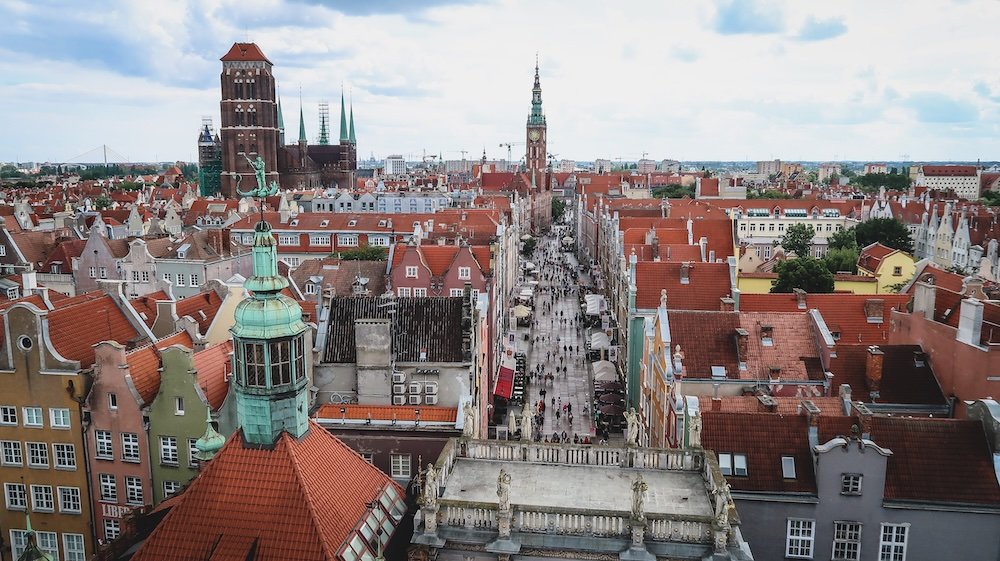
Tours For Visitors To Gdansk, Poland
While Gdansk invites you to meander at your own pace. However, organized tours can illuminate corners you might miss. From historical deep-dives to food-and-drink explorations, these curated things to do ensure you won’t leave wondering if you saw the best of this Baltic gem.
1) Old Town Walking Tour
A walking tour through Gdansk’s Old Town typically starts near the Golden Gate, leading you along Długa Street and Długi Targ. Guides highlight the architecture’s blend of Gothic, Renaissance, and Baroque influences, telling stories of merchants, war aftermaths, and cultural renaissances. You’ll stop by St. Mary’s Church, Neptune’s Fountain, and the ornate facades that once housed wealthy Hanseatic traders. Some tours also dip into hidden alleys or local courtyards for that behind-the-scenes flair. This format suits first-timers seeking an overview or returning fans who desire deeper context. With about two hours of meandering, you’ll leave with a panoramic sense of Gdansk’s evolution.
- Group Size: Usually 10–20, though private tours might be smaller for an intimate vibe.
- Language: English, German, and other options based on demand.
- Tip: Some free (tip-based) tours exist—check local schedules or meet-up points.
Tip: Arrive early—you’ll dodge midday throngs and relish quieter Old Town streets.
2) Night Tour: Ghosts & Legends
For a dash of the eerie, an evening ghost tour laces Gdansk’s historical routes with spooky anecdotes. Guides in period costume might recount hauntings—like restless spirits in old merchant houses or chilling events post-war. Lantern-lit streets add drama, while parted shadows create an atmospheric set for tall tales. Not all stories are hardcore horror; some tours mix comedic folklore to lighten the mood. Regardless, you’ll see Gdansk’s familiar lanes in new, haunting light. It’s ideal for travelers who enjoy edgy narratives beyond typical daytime facts.
- Duration: About 1.5 hours, weaving through quieter side streets.
- Family Considerations: Mildly spooky, so judge if kids can handle ghostly vibes.
- Tip: Some tours end near a local pub—perfect for a chill-down beverage post-haunts.
Tip: Wear comfortable shoes—the cobblestones can be slick at night, and you’ll be stopping often to hear ghostly yarns.
3) Amber & Craft Tour
Gdansk’s often dubbed the “World Capital of Amber,” so an amber-centric tour focuses on this golden fossil’s significance. Guides show you how raw amber’s mined, how to spot fakes, and which local boutiques sell high-quality pieces. Some tours include a workshop: you’ll polish a small amber chunk or watch artisans craft elaborate pendants. Combine that with a brief city wander, stopping at storied merchant houses once integral to the amber trade. You’ll walk away with gemlike knowledge—and maybe a precious souvenir.
- Hands-On: Some tours let you handle amber lumps or see mosquito fossils.
- Shopping: Discounts might apply at partnered shops, so if you plan big purchases, check for deals.
- Tip: The Amber Museum is often looped in, providing historical context.
Tip: Ask about custom designs if you crave a personal amber item for a lasting Gdansk memory.
4) Food & Vodka Tasting Tour
Foodies gravitate to a Polish culinary tour, tasting pierogi, bigos, or zapiekanka from street stalls and restaurants. Add a splash of local vodka or craft beer to lighten the mood. Guides share background on each dish—like why herring is so beloved, or how certain soups evolved from peasant roots. Some tours pass through a local market, letting you see produce, fresh bread, or honey-based items. As you snack, you’ll glean insight into Gdansk’s role as a trading port that shaped these flavors. By the final stop, you’ll be sated, informed, and maybe a bit tipsy from robust vodka samples.
- Duration: 2–3 hours, multiple tasting stops—arrive hungry.
- Vegetarian Options: Usually possible if you alert them beforehand.
- Tip: Some tours highlight desserts, so save belly space for sweet endings.
Tip: Pace yourself—Polish portions can be hearty, and sampling everything at each stop is tempting.
5) Tri-City Bike Tour (Gdansk – Sopot – Gdynia)
For an active spin, a bike tour weaving Gdansk, Sopot, and Gdynia showcases the best of the Tri-City region. Depart from Gdansk’s center, cycle along coastal paths or green routes, and watch the scenery shift from old-world architecture to modern seafront vibes. You’ll pause in Sopot—maybe to stroll Europe’s longest wooden pier—then continue to Gdynia’s harbor for maritime glimpses. Guides highlight local landmarks, share anecdotes about each city’s distinct identity, and ensure a moderate pace. The entire loop can range 4–6 hours, so a decent fitness level helps.
- Equipment: Rental bikes, helmets, sometimes e-bikes.
- Stops: Scenic spots, possible café breaks, quick photo ops by the sea.
- Tip: Bring a small daypack with water and a windbreaker, as Baltic breezes can pick up.
Tip: Confirm the route—some tours tailor distances for novices vs. advanced cyclists.
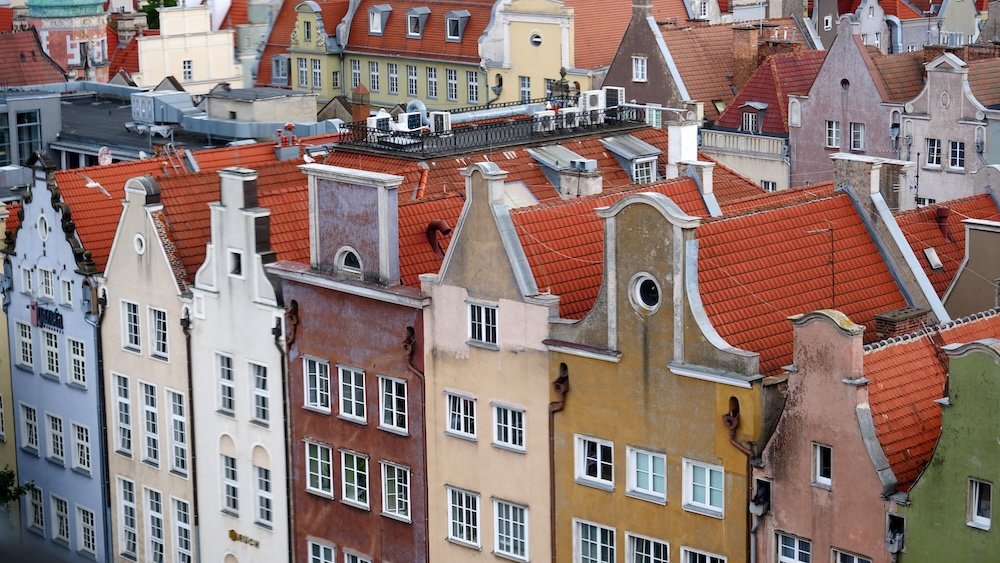
Gdansk Accommodations Guide: Hotels, Guesthouses and Hostels
Gdansk isn’t just about scenic canals and vibrant squares. It’s also about finding the ideal place to stay. With things to do across the Tri-City region, picking a lodging spot can shape your daily vibe. Below is how to navigate hotels, guesthouses, and budget nooks around this coastal treasure.
Hotels
Gdansk’s hotels stretch from the bustling Old Town core to quieter waterfront corners. Some exude classic grandeur, boasting rooftop terraces or spa facilities. Others flaunt modern minimalism with crisp lines and city views. If you crave historical immersion, pick a renovated merchant house turned boutique hotel—where centuries-old brick walls meet contemporary design. Mid-range chains near the train station or main roads ensure easy day trips to Sopot or Malbork. Keep in mind, high season (summer and major festivals) can see prices spike, so early booking is wise.
- Rates: ~€60–€120 for mid-tier, more for luxury offerings with prime river views.
- Amenities: On-site dining, potential fitness rooms, plus front-desk staff offering tours or transport tips.
- Tip: Some places include breakfast featuring local breads, cold cuts, and perhaps herring—worth inquiring about.
Tip: Opt for riverside lodging if you love scenic Motlawa glimpses from your window at dawn or dusk.
Guesthouses & Apartments
For a homier feel, Gdansk brims with guesthouses and private apartments. These might nestle in narrow Old Town alleys or modern blocks near beaches. Expect warm welcomes, personal touches, and sometimes a kitchenette or living room. Families or groups often save money renting a two- or three-bedroom apartment, splitting costs. Meanwhile, couples might relish a snug guesthouse featuring homemade breakfasts and chatty hosts. If you prefer independence or longer stays, apartments help you cook local produce from markets, immersing you in Gdansk’s daily rhythm.
- Online Platforms: Airbnb, Booking, local Polish sites—compare reviews for cleanliness and host reliability.
- Flexibility: Extended stays can net discounts; check if weekly or monthly rates apply.
- Tip: Some apartments boast Old Town terrace views, letting you sip coffee as church bells echo in the morning.
Tip: Ask about laundry options—some rentals include washers, handy if you’re traveling long-term.
Hostels
If you’re on a budget or love meeting fellow travelers, hostels near Gdansk’s city center or train station do the trick. Dorm beds start around €10–€15, with private rooms at higher rates. Hostels typically feature communal kitchens, common lounges, and a social vibe—perfect for forging new friendships or gleaning local tips from staff. Some also organize group activities, pub crawls, or walking tours. Noise can be a factor, though: earplugs help if the hostel’s near nightlife hotspots or if dorm-mates return late. This route suits backpackers, students, or budget travelers keen to stretch funds for more tours or experiences.
- Atmosphere: Youthful, communal, though all ages can join if you’re open to the vibe.
- Language: Hostel staff often fluent in English, plus random global tongues from traveling guests.
- Tip: Lock valuables in provided lockers—peace of mind if you’re out exploring all day.
Tip: Arrive early to snag lower bunks or preferred dorm spots—hostels usually can’t guarantee bed positions in big dorms.
Location Considerations
Old Town: Great for stepping onto Długi Targ or the Motlawa River within minutes. Perfect if most of your itinerary is central.
Wrzeszcz or Oliwa: More local flavor, quieter nights, but a short tram or SKM ride to the core. Good compromise for calmer evenings and lower rates.
Near Beach: For those who fancy a coastal extension in Gdańsk’s Jelitkowo or Brzeźno areas, with easy bus/tram links to downtown.
- Transport: Gdansk’s SKM trains or trams connect you well—just note if you’re up for daily commutes.
- Cost: Typically cheaper outside the Old Town; prime spots carry a premium.
- Tip: Some hotels near the beach focus on spa or wellness, a treat for combining city touring with relaxation.
Tip: Check final transport times—staying far from the center means mindful planning if you’re out late.
Seasonal Booking Advice
Summer sees festivals, cruise ship arrivals, and sunshine fueling Gdansk’s popularity. Book months ahead for prime weekends or big events like the St. Dominic’s Fair. Winter? Fewer crowds and potential lodging bargains, though some smaller guesthouses scale back. Shoulder seasons (spring/autumn) can blend moderate rates with mild weather—ideal for exploring minus sweltering heat or biting cold. Weigh your priorities: do you want that buzzing peak-season vibe or a quieter off-peak escape?
- Cancellations: Flexible reservations help if your schedule shifts, especially around major festivals.
- Early Birds: Snag better deals plus more property choices.
- Tip: Local events (like big football matches or cultural fairs) spike demand—watch city calendars.
Tip: Direct contact sometimes nabs you better rates or freebies (like breakfast) than booking sites.
Our Travel Video (Sopot) on Samuel and Audrey YouTube channel (Nomadic Samuel + That Backpacker hosting)
Day Trips From Gdansk, Poland
While Gdansk itself is a vibrant Baltic hub, venturing beyond city limits opens up a realm of additional things to do. These day trips weave together nature, culture, and historical nuance, letting you see how Gdansk’s region forms part of a broader Polish tapestry. Here are five curated getaways that perfectly complement your Gdansk stay.
1) Sopot: Relaxed Seaside Charm
A mere 20-minute SKM train hop from Gdansk, Sopot brims with beachy ambiance. Europe’s longest wooden pier juts into the Baltic, where locals stroll in the sun and sea breeze. Monte Cassino Street forms the lively heart: cafés, street performers, and whimsical architecture like the Crooked House. If you crave downtime, sprawl on the sandy shoreline or sample fish dishes near the pier. Summer weekends do get bustling, but that crowd fosters an upbeat mood. Sopot merges casual beach life with a bit of sparkle, making it an easy half-day or full-day respite from city exploring.
- Nightlife: Clubs and bars along the main drag can run until dawn in peak season.
- Ticket: The pier might charge a small entrance fee in summer; off-season is free.
- Tip: Some Sopot hotels offer day spa deals, ideal if you fancy deeper relaxation.
Tip: Arrive early for sun loungers—the beach can fill quickly on warm weekends.
2) Gdynia’s Modern Edge
Part of the Tri-City trifecta, Gdynia sits about 30 minutes from Gdansk by train, showcasing a more modern face. Built extensively in the interwar era, Gdynia’s city center flaunts streamlined architecture reminiscent of early 20th-century modernism. The harbor area hosts the Dar Pomorza tall ship museum and a lively marina scene. Grab a waterfront meal or roam Kościuszki Square, often buzzing with festivals. For nature-lovers, Orłowo’s cliffside and pier beckon, perfect for scenic walks. Gdynia’s youthful vibe plus its maritime focus makes it a dynamic day trip alternative to Gdańsk’s older architecture.
- Shopping: Modern malls near the station plus local boutiques.
- Cuisine: Sea-themed bistros or international eats—something for every palate.
- Tip: A short bus from Gdynia leads to Orłowo—the clifftop views are mesmerizing.
Tip: Pair Gdynia and Sopot in one day if you’re short on time—both are easily connected via SKM.
3) Hel Peninsula
Despite its amusing name, the Hel Peninsula is a slender spit jutting into the Baltic, about 1.5 to 2 hours from Gdansk by ferry or train. Once there, you’ll discover beaches, wind-kissed dunes, and water sports galore, from kitesurfing to windsurfing. The town of Hel boasts a seal sanctuary (fokarium) where rescued seals recuperate. Stroll the fishing port, sampling fresh fish or marine-inspired crafts. The peninsula’s laid-back vibe differs from Gdansk’s urban pace—a chance to breathe salty air, feel sand between your toes, and let time slow down.
- Transport: Seasonal ferries from Gdańsk or Sopot create a scenic route; trains run from Gdynia year-round.
- Peak: Summer sees throngs of local holidaymakers, so expect lively beaches.
- Tip: Some Hel towns rent bikes—pedal along the length for sea views on both sides.
Tip: Check ferry schedules—departures can be early, and returning spots fill quickly in peak months.
Samuel and Audrey YouTube Channel: Nomadic Samuel + That Backpacker hosting episode
4) Malbork Castle for a Medieval Escape
An hour’s train ride southeast from Gdansk reveals Malbork, famed for its colossal brick fortress. Built by the Teutonic Knights, the castle dwarfs visitors with multiple courtyards, chapels, and thick defensive walls. Explore the High, Middle, and Lower castle sections, each brimming with Gothic grandeur. Audio guides or group tours unlock centuries of history: from monastic routines to grand master ceremonies. A stroll along the Nogat River after your castle fix adds scenic calm. If you’re a history buff, Malbork is a non-negotiable must.
- Time: Plan 3–4 hours to fully tour the fortress, plus a break for lunch.
- Peak: Summer weekends jam up with visitors; aim for weekday or early arrival.
- Tip: Some nights feature light shows or medieval re-enactments, but you’d need an evening departure back to Gdansk.
Tip: Wear comfortable shoes—the castle floors range from uneven stone to steep stairs.
5) Kashubian Lake District
For tranquil nature, the Kashubian Lake District beckons about an hour’s drive west from Gdansk. Rolling hills, pristine lakes, and cozy villages form the region’s calm backdrop. You can rent a canoe, take a refreshing dip, or wander trails that wind through pine forests. Some day tours highlight Kashubian culture—embroidered patterns, language nuances, or gastronomic treats like smoked cheese or regional pastries. If you’re longing for a breath away from city bustle, these lakes offer peace in spades. Perfect for hikers, fishers, or anyone seeking a scenic mental recharge.
- Transport: Best with a rental car or organized tour—public buses are sporadic.
- Village Life: Look for local handicrafts, homemade preserves, or small roadside stands selling fruit.
- Tip: Some farms rent rooms or run workshops on Kashubian crafts.
Tip: Plan a picnic—the lakeside meadows are glorious for al fresco lunches, especially in spring or summer.
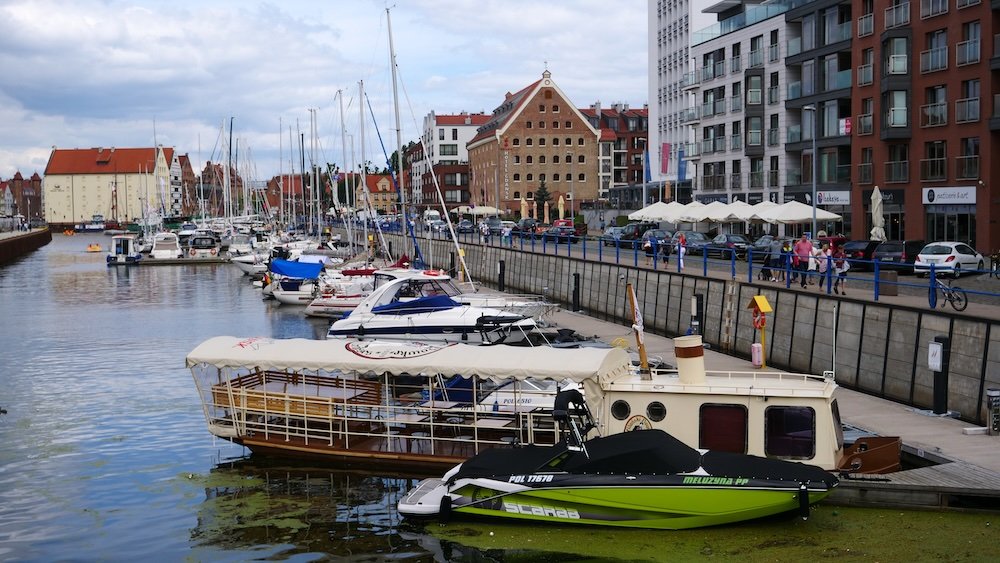
Gdansk Transportation Guide
Poland’s northern port city can feel expansive. But Gdansk sports a well-connected web of trains, trams, and roads that make local or regional things to do feasible. Below is how to navigate Gdansk hassle-free, ensuring more time for actual exploring rather than timetabling woes.
Arriving in Gdansk
Gdansk Lech Wałęsa Airport greets many travelers, roughly 12 km from the city center. Taxis or rideshare apps (Uber, Bolt) are quick but cost more; a 30-minute ride might set you back ~70–80 PLN. Alternatively, the PKM train (Metropolitan Railway) links the airport with Gdansk Wrzeszcz station, from which you catch SKM trains to Gdansk Główny. Buses also run, e.g., line 210, shuttling you into central Gdansk in about 40 minutes, depending on traffic. For those coming by train from Warsaw or other Polish cities, Gdansk Główny station stands near the Old Town, making it an easy stroll to main hotels.
- Time: Airport to city center: 20–30 minutes by taxi, ~30–40 minutes by bus or train.
- Tickets: Bus/tram tickets typically sold at kiosks or onboard.
- Tip: If you have big luggage, Uber might be simpler than juggling buses or crowd-laden trains.
Tip: Check late-night schedules—some lines reduce frequency after 10 PM or so.
Getting Around: SKM Trains & Trams
SKM trains run frequently between Gdansk, Sopot, and Gdynia, forming the Tri-City backbone. They’re handy for day trips (like to Sopot beaches) or simply skipping city traffic. For shorter hops within Gdansk, trams do the heavy lifting—lines crisscross from Old Town to suburbs like Wrzeszcz or Przymorze. Both SKM and trams can get crowded in rush hours or tourist peaks, but they’re cheap, frequent, and relatively reliable. Tickets vary by zone or time durations—validate them once aboard. If you’re planning multiple rides, daily or short-term passes might be cheaper than single fares.
- SKM stops: Gdansk Główny, Gdansk Wrzeszcz, Gdansk Zaspa, etc., plus Sopot, Gdynia.
- Tram coverage: Key lines pass near Old Town, the shipyard area, and big shopping or museum districts.
- Tip: Some modern trams have screens in English—older ones might not, so track your stop carefully.
Tip: Download a local transit app (like JakDojade) for real-time route planning in multiple languages.
Buses & Night Services
City buses complement trams for routes trams don’t cover. Lines 106, 112, or 186 may connect lesser-seen corners, industrial zones, or suburban pockets. At night, a handful of night buses keep city travel feasible, although frequency drops drastically. If you’re out partying in Sopot or exploring Gdańsk’s nightlife, confirm times to avoid extended waiting in the dark. Some stops display real-time boards, but older stops rely on posted schedules. As with trams, you buy tickets from machines, onboard (sometimes at a slight surcharge), or kiosk stands.
- Night Buses: Typically have “N” prefix, e.g., N1 or N3.
- Zone Tickets: Gdansk is often within one zone, but crossing city boundaries (like to Sopot) might require a broader ticket.
- Tip: Drivers rarely speak fluent English, so have your destination noted or memorized phonetically.
Tip: Carry coins—bus machines can be coin-only, and not all accept cards.
Taxis & Ride-Hailing
Taxis cluster near train stations, airports, or main squares. Most run on meters, though ask roughly how much it costs to your hotel or a day-trip departure point. Rideshare (Uber, Bolt) is generally available, typically cheaper than traditional cabs, especially for short hops. If traveling in groups, splitting fare might match or beat bus costs. Late nights can see surge pricing or limited drivers, so plan ahead if you’re reliant on an early-morning airport run.
- Language: Show address in Polish if possible—some drivers have limited English.
- App: Bolt is popular, offering slightly lower fares than Uber at times.
- Tip: Look for official taxi signage—avoid unmarked cars to dodge scams.
Tip: Monitor the route on your phone—most drivers are honest, but vigilance never hurts.
Driving & Parking
Renting a car in Gdansk can help if you plan extended day trips or countryside visits. City traffic, though, can tangle up around rush hours or major tourist weekends. Parking in Old Town is tricky—street spots fill quickly, and you might face short time limits or fees in designated zones. A few public garages exist, but summer sees them jam up. If your hotel has onsite parking, that’s a boon. Driving the Tri-City route is straightforward, with decent signage, but watch for local speed cameras on main roads.
- Documents: EU or recognized international driving permit plus standard insurance.
- Navigation: GPS or offline maps—some side streets have complicated one-way systems.
- Tip: If you only roam the Old Town, public transport plus walking is easier than dealing with parking stress.
Tip: Use park-and-ride near big tram terminals if you want a simpler Old Town approach.
Biking & Walking
Gdansk fosters scenic walks—especially along the Motlawa River or the charming Old Town lanes. Distances are manageable if you base yourself near central districts. For biking enthusiasts, designated paths run from Gdańsk to Sopot or within city limits, though some older roads lack bike lanes. Rental shops might offer day rates—just make sure to lock up, especially around busy squares or train stations. If your day involves back-to-back museum stops, walking is often enough. You’ll pass hidden corners, local shops, or random street art that speedy buses might overlook.
- Bike Stations: Public bike share (Mevo) was tested in the Tri-City, but check if it’s active or functional.
- Footwear: Old Town’s cobblestones can be slick when wet, so stable shoes matter.
- Tip: Late evenings can be quiet, so you’ll practically have the Old Town streets to yourself.
Tip: Carry a small refillable bottle—fountains or cafés can help you stay hydrated, especially if you’re strolling all day.
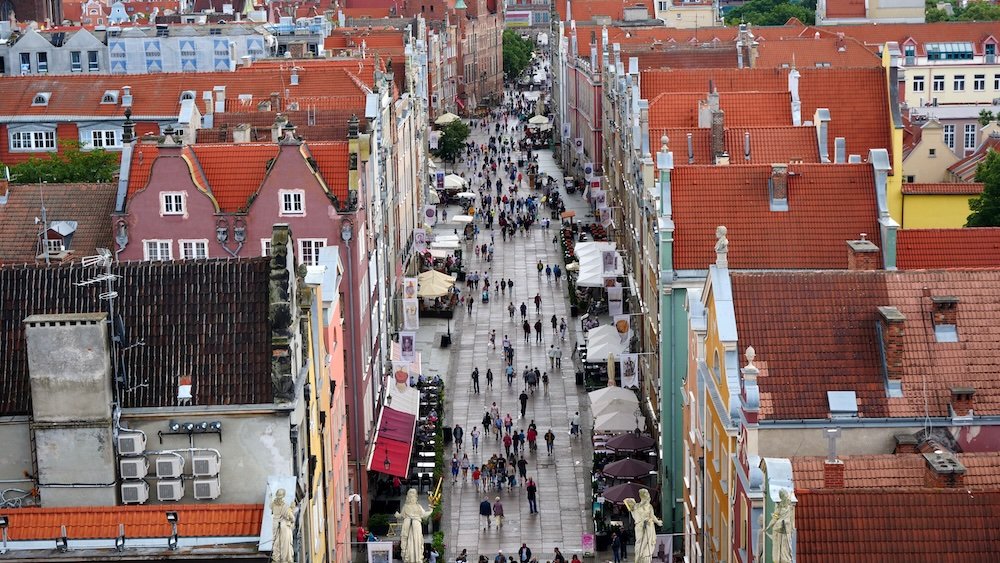
Gdansk Travel Guide: Conclusion
Gdansk merges medieval intrigue with a lively maritime scene that feels both timeless and innovative. The city’s things to do weave between centuries-old buildings, bustling riverside terraces, and cultural landmarks. It sparks reflection on Poland’s storied past. One moment, you’re marveling at the Gothic façade of St. Mary’s Church or capturing Neptune’s Fountain in the perfect Instagram shot. The next, you might be sampling fresh fish at a floating restaurant, listening to the clang of shipyard echoes that shaped modern Europe. This blend of old and new forms Gdansk’s core identity—proud yet forward-looking.
After exploring the iconic landmarks, from the Motlawa promenade to the grand medieval port crane, you’ll sense how Gdansk’s seafaring legacy saturates its everyday life. Locals often speak of the Baltic wind shaping the city’s weather and spirit. You can feel it swirling around the cobblestone squares. Meanwhile, the warmth of Polish hospitality creeps in with each plate of pierogi or bigos you taste. Add to that the city’s significance as a cradle for the Solidarity movement—immortalized at the European Solidarity Centre—and you realize Gdansk isn’t merely pretty architecture, but a place where pivotal history reverberates globally.
Final Thoughts
Yet it’s not all solemn. Gdansk dances in festivals, open-air concerts, and a thriving café scene that invites you to linger over coffee or a craft beer. If your schedule’s flexible, day trips to Sopot, Gdynia, or even Malbork Castle can round out your coastal perspective. Thanks to an efficient SKM train network and easily navigable roads, you can hop from the Old Town’s hustle to laid-back beaches in minutes. Or delve deeper into the Tri-City synergy, noticing subtle differences in vibe between each neighboring borough.
Ultimately, Gdansk thrives on its contradictions: maritime hustle meets laid-back café culture, medieval spires loom over modern shops, and a proud Polish heritage intersects with global influences. Touring the city leaves you with snapshots: a ring of seagulls over the port crane, the sweetness of amber shops twinkling under the midday sun, or the echo of an organ playing softly in St. Mary’s hush. Embrace Gdansk’s uniqueness. Soaking in each nuance. From your first stroll down Long Lane to your final sip of hot coffee by the water. With the breeze on your cheeks and the city’s history in your heart, you’ll depart Gdansk inspired and perhaps already plotting your return.
